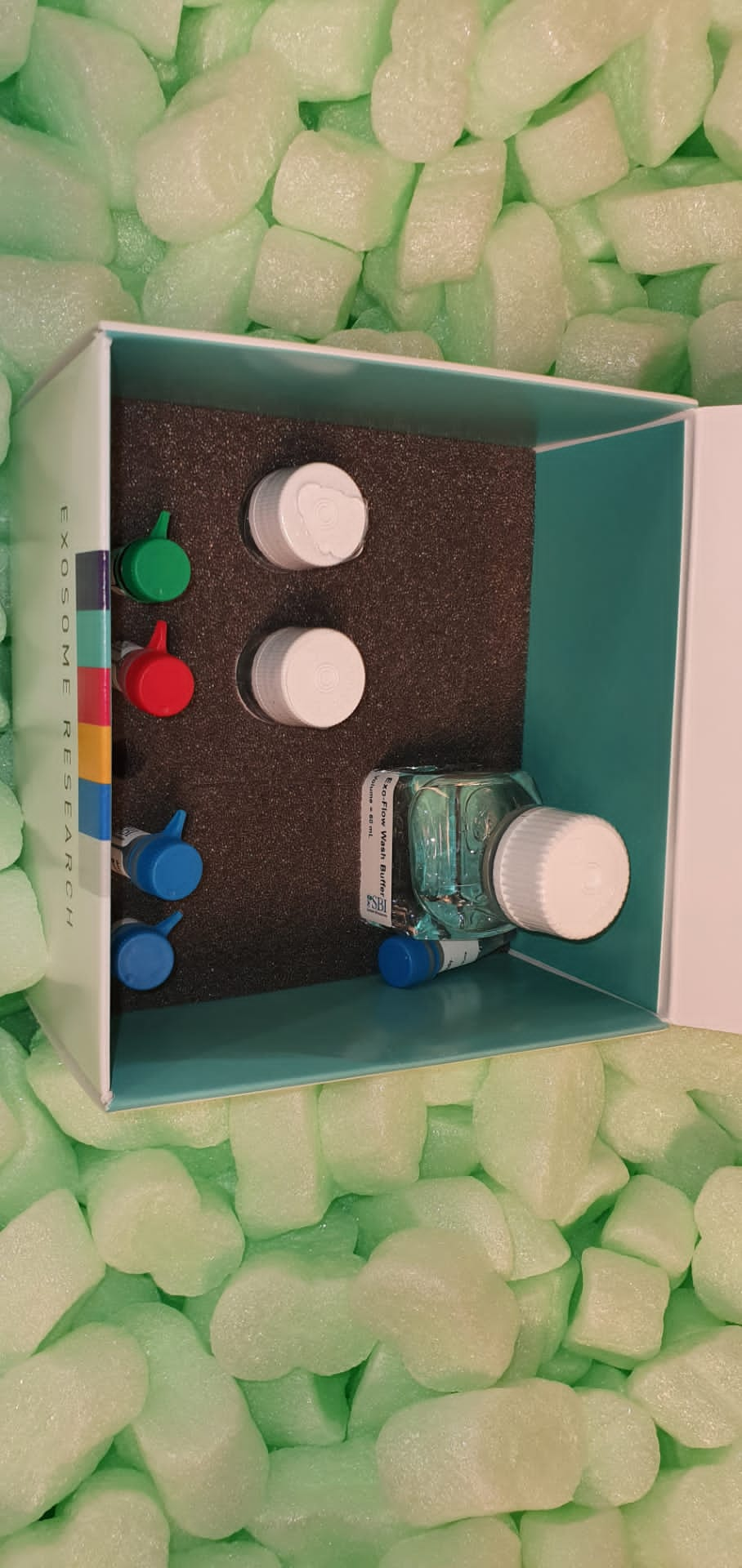The research of populations of massive dimension and excessive variety is proscribed by the aptitude of gathering knowledge. Moreover, for a pool of people, every related to a distinctive attribute function, because the pool dimension grows, the potential interactions enhance exponentially, rapidly past the restrict of computation and experimental research. Herein, we current designs of DNA libraries with numerous variety. Using a facile analytic technique primarily based on actual time PCR, we are able to consider the range of a pool of DNA permitting terribly excessive heterogenicity (e.g. > 1 trillion).
We demonstrated that these DNA libraries can be utilized to mannequin heterogeneous populations, exhibiting capabilities corresponding to self-protection, appropriate for biased enlargement, and to evolve into amorphous constructions. The technique has proven the exceptional energy of parallel computing utilizing DNA, as it may well resemble an analogue pc and be utilized in selection-based biotechnology strategies, corresponding to DNA-encoded chemical libraries. As a chemical method to unravel issues historically for genetic and statistical evaluation, the strategy offers a fast and cost-efficient analysis of library variety for the intermediate steps by a choice course of.
Consistent variations amongst melting curves of PCR-amplified DNA fragments are handled by normalizing the relative fluorescence models (RFU) and performing a clustering evaluation, however statistically important variations amongst curves usually are not often decided. In the current research, an evaluation primarily based on useful knowledge evaluation (FDA) was applied to judge the existence of statistically important variations between normalized RFU curves obtained from PCR-HRM (high-resolution melting) evaluation by utilizing ANOVA for useful knowledge.
The effectiveness of the FDA technique was analyzed with knowledge from a set of samples of eight animal species of curiosity in meals evaluation, in addition to mixtures of DNA from these species, analyzed by PCR-HRM to distinguish them. The statistical technique described on this research has been demonstrated to be a sturdy and exact device to discriminate amongst melting curves derived from HRM evaluation. This technique has benefits over the present comparability strategies. PRACTICAL APPLICATION: As lengthy as meals fraud and mislabeling exist, new methods for species identification are wanted.
Rapid and Reliable One-Step ABO Genotyping Using Direct Real-Time Allele-Specific PCR and Melting Curve Analysis Without DNA Preparation.
ABO genotyping is a molecular diagnostic method necessary for transfusion and transplantation in medication, and human identification in forensic science. Because ABO genotyping are labor intensive and time consuming, the genotyping can’t be firstly used to resolve the serological ABO discrepancy in blood financial institution. For fast one-step ABO genotyping, we developed direct, real-time, allele-specific polymerase chain response (PCR), and melting curve evaluation (DRAM assay) with out DNA preparation. In DRAM assay, we used a particular PCR buffer for direct PCR, a fast RBC lysis buffer, white blood cells as template with out DNA preparation, allele-specific primers for discriminating three ABO alleles (261G/del, 796C/A, and 803G/C), and melting curve evaluation as a detection technique.
There was 100% concordance among the many outcomes of ABO genotyping by the DRAM assay, serologic typing, PCR-RFLP and PCR-direct sequencing of 96 venous blood samples. We have been capable of cut back the quantity of handbook steps to a few and the hands-on time to 12 min, in comparison with seven steps and roughly 40 min for standard ABO genotyping utilizing allele-specific PCR with purified DNA and agarose gel electrophoresis. We have established and validated the DRAM assay for fast and dependable one-step ABO genotyping in a closed system. The DRAM assay with an acceptable quantity of allele-specific primers may assist in resolving ABO discrepancies and ought to be helpful in scientific laboratory and blood financial institution.
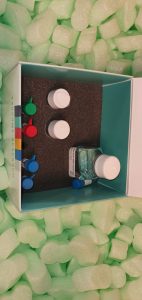
Analyses of the genetic variety and inhabitants constructions of Histoplasma capsulatum scientific isolates from Mexico, Guatemala, Colombia and Argentina, utilizing a randomly amplified polymorphic DNA–PCR assay.
We studied the genetic variety and the inhabitants construction of human isolates of Histoplasma capsulatum, the causative agent of histoplasmosis, utilizing a randomly amplified polymorphic DNA-polymerase chain response (RAPD-PCR) assay to determine associations with the geographic distribution of isolates from Mexico, Guatemala, Colombia and Argentina. The RAPD-PCR sample analyses revealed the genetic variety by estimating the proportion of polymorphic loci, efficient quantity of alleles, Shannon’s index and heterozygosity. Population construction was recognized by the index of affiliation (IA) take a look at. These knowledge contribute to the information on the molecular epidemiology of histoplasmosis in Latin America.
Thirty-seven isolates have been studied and clustered into three teams by the unweighted pair-group technique with arithmetic imply (UPGMA). Group I contained 5 subgroups primarily based on geographic origin. The consistency of the UPGMA dendrogram was estimated by the cophenetic correlation coefficient (CCCr = 0.94, P = 0.001). Isolates from Mexico and Colombia introduced larger genetic variety than isolates from Argentina. Isolates from Guatemala grouped along with the reference strains from the United States of America and Panama. The IA values recommend the presence of a clonal inhabitants construction within the Argentinian H. capsulatum isolates and additionally validate the presence of recombining populations within the Colombian and Mexican isolates.
 Mouse C57 Salivary gland, Submandibular cDNA-Random Primer |
|
MD-317-C57-RH |
Zyagen |
30 reactions |
EUR 280 |
 Mouse CD1 Salivary gland, Submandibular cDNA-Random Primer |
|
MD-317-HR |
Zyagen |
30 reactions |
EUR 243 |
 Glandular kallikrein-3, submandibular |
|
AP84287 |
SAB |
1mg |
EUR 2640 |
|
|
 Submandibular glandular kallikrein-9 |
|
AP84804 |
SAB |
1mg |
EUR 2640 |
|
|
) Submandibular Gland Renin antibody (Mouse) |
|
10R-S119a |
Fitzgerald |
200 ul |
EUR 548.4 |
|
Description: Mouse monoclonal Submandibular Gland Renin antibody (Mouse) |
 Immortalized Human Submandibular Gland Cells |
|
T0732 |
ABM |
1x10^6 cells / 1.0 ml |
EUR 2750 |
 Glandular kallikrein-7, submandibular/renal |
|
AP84634 |
SAB |
1mg |
EUR 2640 |
|
|
 - Mouse mucin 10, submandibular gland salivary mucin (cDNA clone MGC:25326 IMAGE:4924369), (10ug)) Muc10 (untagged) - Mouse mucin 10, submandibular gland salivary mucin (cDNA clone MGC:25326 IMAGE:4924369), (10ug) |
|
MC218203 |
Origene Technologies GmbH |
10 µg |
Ask for price |
 - Mouse mucin 10, submandibular gland salivary mucin (cDNA clone MGC:29112 IMAGE:4166946), (10ug)) Muc10 (untagged) - Mouse mucin 10, submandibular gland salivary mucin (cDNA clone MGC:29112 IMAGE:4166946), (10ug) |
|
MC206844 |
Origene Technologies GmbH |
10 µg |
Ask for price |
 - Mouse mucin 10, submandibular gland salivary mucin (cDNA clone MGC:29112 IMAGE:4166946)) Muc10 (GFP-tagged) - Mouse mucin 10, submandibular gland salivary mucin (cDNA clone MGC:29112 IMAGE:4166946) |
|
MG201463 |
Origene Technologies GmbH |
10 µg |
Ask for price |
 - Mouse mucin 10, submandibular gland salivary mucin (cDNA clone MGC:25326 IMAGE:4924369)) Muc10 (GFP-tagged) - Mouse mucin 10, submandibular gland salivary mucin (cDNA clone MGC:25326 IMAGE:4924369) |
|
MG203492 |
Origene Technologies GmbH |
10 µg |
Ask for price |
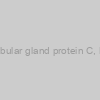 Mouse Submandibular gland protein C, Muc19 ELISA KIT |
|
ELI-35955m |
Lifescience Market |
96 Tests |
EUR 1038 |
 - Mouse mucin 10, submandibular gland salivary mucin (cDNA clone MGC:29112 IMAGE:4166946)) Muc10 (Myc-DDK-tagged) - Mouse mucin 10, submandibular gland salivary mucin (cDNA clone MGC:29112 IMAGE:4166946) |
|
MR201463 |
Origene Technologies GmbH |
10 µg |
Ask for price |
 - Mouse mucin 10, submandibular gland salivary mucin (cDNA clone MGC:25326 IMAGE:4924369)) Muc10 (Myc-DDK-tagged) - Mouse mucin 10, submandibular gland salivary mucin (cDNA clone MGC:25326 IMAGE:4924369) |
|
MR203492 |
Origene Technologies GmbH |
10 µg |
Ask for price |
) Rat Glandular kallikrein-7, submandibular/renal (Klk7) |
|
1-CSB-EP012458RA |
Cusabio |
-
EUR 606.00
-
EUR 318.00
-
EUR 2192.40
-
EUR 919.20
-
EUR 1461.60
-
EUR 402.00
|
- 100ug
- 10ug
- 1MG
- 200ug
- 500ug
- 50ug
|
|
|
|
Description: Recombinant Rat Glandular kallikrein-7, submandibular/renal(Klk7) expressed in E.coli |
 ELISA kit for Rat Submandibular glandular kallikrein-9 |
|
EK1729 |
SAB |
96 tests |
EUR 663.6 |
|
Description: Enzyme-linked immunosorbent assay kit for quantification of Rat Submandibular glandular kallikrein-9 in samples from serum, plasma, tissue homogenates and other biological fluids. |
 ELISA Kit) Rat Submandibular glandular kallikrein-9 (Klk9) ELISA Kit |
|
abx256273-96tests |
Abbexa |
96 tests |
EUR 801.6 |
|
|
 ELISA Kit) Rat Klk9(Submandibular glandular kallikrein-9) ELISA Kit |
|
ER0295 |
FN Test |
96T |
EUR 681.12 |
|
|
|
Description: Method of detection: Double Antibody, Sandwich ELISA;Reacts with: Rattus;Sensitivity: 18.75pg/ml |
 Rat Klk9/ Submandibular glandular kallikrein-9 ELISA Kit |
|
E0548Ra |
Sunlong |
1 Kit |
EUR 685.2 |
 ELISA Kit) Rat Klk9(Submandibular glandular kallikrein-9) ELISA Kit |
|
EKF58847-48T |
Biomatik Corporation |
48T |
EUR 396.9 |
 ELISA Kit) Rat Klk9(Submandibular glandular kallikrein-9) ELISA Kit |
|
EKF58847-5x96T |
Biomatik Corporation |
5x96T |
EUR 2693.25 |
 ELISA Kit) Rat Klk9(Submandibular glandular kallikrein-9) ELISA Kit |
|
EKF58847-96T |
Biomatik Corporation |
96T |
EUR 567 |
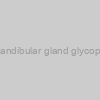 Mouse 16.5 kDa submandibular gland glycoprotein, Spt1 ELISA KIT |
|
ELI-29687m |
Lifescience Market |
96 Tests |
EUR 1038 |
 - Rat submandibular gland protein C (Smgc), (10 ug)) Smgc (untagged ORF) - Rat submandibular gland protein C (Smgc), (10 ug) |
|
RN212008 |
Origene Technologies GmbH |
10 µg |
Ask for price |
 Rat Submandibular gland secretory Glx- rich protein CA, Grpca EL |
|
ELI-27901r |
Lifescience Market |
96 Tests |
EUR 1063.2 |
 Rat Glandular kallikrein- 7, submandibular/renal, Klk7 ELISA KIT |
|
ELI-06139r |
Lifescience Market |
96 Tests |
EUR 1063.2 |
 - Mouse submandibular gland protein C (Smgc), (10ug)) Smgc (GFP-tagged) - Mouse submandibular gland protein C (Smgc), (10ug) |
|
MG219211 |
Origene Technologies GmbH |
10 µg |
Ask for price |
 - Mouse mucin 10, submandibular gland salivary mucin (cDNA clone MGC:29112 IMAGE:4166946)) Lenti ORF clone of Muc10 (mGFP-tagged) - Mouse mucin 10, submandibular gland salivary mucin (cDNA clone MGC:29112 IMAGE:4166946) |
|
MR201463L4 |
Origene Technologies GmbH |
10 µg |
Ask for price |
 - Mouse mucin 10, submandibular gland salivary mucin (cDNA clone MGC:25326 IMAGE:4924369)) Lenti ORF clone of Muc10 (mGFP-tagged) - Mouse mucin 10, submandibular gland salivary mucin (cDNA clone MGC:25326 IMAGE:4924369) |
|
MR203492L4 |
Origene Technologies GmbH |
10 µg |
Ask for price |
 - Mouse mucin 10, submandibular gland salivary mucin (cDNA clone MGC:29112 IMAGE:4166946)) Lenti ORF clone of Muc10 (Myc-DDK-tagged) - Mouse mucin 10, submandibular gland salivary mucin (cDNA clone MGC:29112 IMAGE:4166946) |
|
MR201463L3 |
Origene Technologies GmbH |
10 µg |
Ask for price |
 - Mouse mucin 10, submandibular gland salivary mucin (cDNA clone MGC:25326 IMAGE:4924369)) Lenti ORF clone of Muc10 (Myc-DDK-tagged) - Mouse mucin 10, submandibular gland salivary mucin (cDNA clone MGC:25326 IMAGE:4924369) |
|
MR203492L3 |
Origene Technologies GmbH |
10 µg |
Ask for price |
 Klk9 ELISA Kit| Rat Submandibular glandular kallikrein-9 ELISA K |
|
EF017179 |
Lifescience Market |
96 Tests |
EUR 826.8 |
) Recombinant Rat Glandular kallikrein-7, submandibular/renal(Klk7) |
|
AP70475 |
SAB |
1mg |
EUR 2826 |
|
|
) Recombinant Rat Glandular kallikrein-7, submandibular/renal (Klk7) |
|
CSB-EP012458RA |
Cusabio |
1553 mg |
Ask for price |
 - Rat submandibular gland protein C (Smgc), (10 ug)) Smgc (Myc-DDK-tagged ORF) - Rat submandibular gland protein C (Smgc), (10 ug) |
|
RR212008 |
Origene Technologies GmbH |
10 µg |
Ask for price |
 Recombinant Dog Double-headed protease inhibitor, submandibular gland |
|
RPC27316-100ug |
Biomatik Corporation |
100ug |
EUR 801.9 |
 Recombinant Dog Double-headed protease inhibitor, submandibular gland |
|
RPC27316-1mg |
Biomatik Corporation |
1mg |
EUR 2885.2 |
 Recombinant Dog Double-headed protease inhibitor, submandibular gland |
|
RPC27316-20ug |
Biomatik Corporation |
20ug |
EUR 448.1 |
 Recombinant Dog Double-headed protease inhibitor, submandibular gland |
|
CSB-EP360611DO |
Cusabio |
7287 mg |
Ask for price |
 - Mouse mucin 10, submandibular gland salivary mucin (cDNA clone MGC:29112 IMAGE:4166946), 200ul, >10^7 T) Lenti ORF particles, Muc10 (GFP-tagged) - Mouse mucin 10, submandibular gland salivary mucin (cDNA clone MGC:29112 IMAGE:4166946), 200ul, >10^7 T |
|
MR201463L4V |
Origene Technologies GmbH |
200 µl |
Ask for price |
 - Mouse mucin 10, submandibular gland salivary mucin (cDNA clone MGC:25326 IMAGE:4924369), 200ul, >10^7 T) Lenti ORF particles, Muc10 (GFP-tagged) - Mouse mucin 10, submandibular gland salivary mucin (cDNA clone MGC:25326 IMAGE:4924369), 200ul, >10^7 T |
|
MR203492L4V |
Origene Technologies GmbH |
200 µl |
Ask for price |
 - Rat neonatal submandibular gland protein B (Smgb), (10 ug)) Bpifa2f (untagged ORF) - Rat neonatal submandibular gland protein B (Smgb), (10 ug) |
|
RN212284 |
Origene Technologies GmbH |
10 µg |
Ask for price |
) Recombinant Rat Submandibular gland secretory Glx-rich protein CB (Grpcb) |
|
CSB-YP357398RAa0 |
Cusabio |
10597 mg |
Ask for price |
 - Rat mucin 10, submandibular gland salivary mucin (Muc10), (10 ug)) Prol1 (untagged ORF) - Rat mucin 10, submandibular gland salivary mucin (Muc10), (10 ug) |
|
RN215454 |
Origene Technologies GmbH |
10 µg |
Ask for price |
 - Mouse mucin 10, submandibular gland salivary mucin (cDNA clone MGC:29112 IMAGE:4166946), 200ul, >10) Lenti ORF particles, Muc10 (Myc-DDK-tagged) - Mouse mucin 10, submandibular gland salivary mucin (cDNA clone MGC:29112 IMAGE:4166946), 200ul, >10 |
|
MR201463L3V |
Origene Technologies GmbH |
200 µl |
Ask for price |
 - Mouse mucin 10, submandibular gland salivary mucin (cDNA clone MGC:25326 IMAGE:4924369), 200ul, >10) Lenti ORF particles, Muc10 (Myc-DDK-tagged) - Mouse mucin 10, submandibular gland salivary mucin (cDNA clone MGC:25326 IMAGE:4924369), 200ul, >10 |
|
MR203492L3V |
Origene Technologies GmbH |
200 µl |
Ask for price |
 - Rat submandibular gland protein C (Smgc), (10 ug)) Lenti ORF clone of Smgc (mGFP-tagged ORF) - Rat submandibular gland protein C (Smgc), (10 ug) |
|
RR212008L4 |
Origene Technologies GmbH |
10 µg |
Ask for price |
 - Rat neonatal submandibular gland protein B (Smgb), (10 ug)) Bpifa2f (Myc-DDK-tagged ORF) - Rat neonatal submandibular gland protein B (Smgb), (10 ug) |
|
RR212284 |
Origene Technologies GmbH |
10 µg |
Ask for price |
, Mouse and Rat) Epithelial Dissociation System 4 (Epithelial,Submandibular salivary), Mouse and Rat |
|
4-20254 |
CHI Scientific |
ea |
Ask for price |
 - Rat mucin 10, submandibular gland salivary mucin (Muc10), (10 ug)) Prol1 (Myc-DDK-tagged ORF) - Rat mucin 10, submandibular gland salivary mucin (Muc10), (10 ug) |
|
RR215454 |
Origene Technologies GmbH |
10 µg |
Ask for price |
 - Rat submandibular gland protein C (Smgc), (10 ug)) Lenti ORF clone of Smgc (Myc-DDK-tagged ORF) - Rat submandibular gland protein C (Smgc), (10 ug) |
|
RR212008L3 |
Origene Technologies GmbH |
10 µg |
Ask for price |
 - Rat submandibular gland protein C (Smgc), 200ul, >10^7 TU/mL) Lenti ORF particles, Smgc (GFP-tagged ORF) - Rat submandibular gland protein C (Smgc), 200ul, >10^7 TU/mL |
|
RR212008L4V |
Origene Technologies GmbH |
200 µl |
Ask for price |
 - Rat neonatal submandibular gland protein B (Smgb), (10 ug)) Lenti ORF clone of Bpifa2f (mGFP-tagged ORF) - Rat neonatal submandibular gland protein B (Smgb), (10 ug) |
|
RR212284L4 |
Origene Technologies GmbH |
10 µg |
Ask for price |
 - Rat mucin 10, submandibular gland salivary mucin (Muc10), (10 ug)) Lenti ORF clone of Prol1 (mGFP-tagged ORF) - Rat mucin 10, submandibular gland salivary mucin (Muc10), (10 ug) |
|
RR215454L4 |
Origene Technologies GmbH |
10 µg |
Ask for price |
 - Rat submandibular gland protein C (Smgc), 200ul, >10^7 TU/mL) Lenti ORF particles, Smgc (Myc-DDK-tagged ORF) - Rat submandibular gland protein C (Smgc), 200ul, >10^7 TU/mL |
|
RR212008L3V |
Origene Technologies GmbH |
200 µl |
Ask for price |
 - Rat neonatal submandibular gland protein B (Smgb), (10 ug)) Lenti ORF clone of Bpifa2f (Myc-DDK-tagged ORF) - Rat neonatal submandibular gland protein B (Smgb), (10 ug) |
|
RR212284L3 |
Origene Technologies GmbH |
10 µg |
Ask for price |
 - Rat mucin 10, submandibular gland salivary mucin (Muc10), (10 ug)) Lenti ORF clone of Prol1 (Myc-DDK-tagged ORF) - Rat mucin 10, submandibular gland salivary mucin (Muc10), (10 ug) |
|
RR215454L3 |
Origene Technologies GmbH |
10 µg |
Ask for price |
 - Rat neonatal submandibular gland protein B (Smgb), 200ul, >10^7 TU/mL) Lenti ORF particles, Bpifa2f (GFP-tagged ORF) - Rat neonatal submandibular gland protein B (Smgb), 200ul, >10^7 TU/mL |
|
RR212284L4V |
Origene Technologies GmbH |
200 µl |
Ask for price |
 - Rat mucin 10, submandibular gland salivary mucin (Muc10), 200ul, >10^7 TU/mL) Lenti ORF particles, Prol1 (GFP-tagged ORF) - Rat mucin 10, submandibular gland salivary mucin (Muc10), 200ul, >10^7 TU/mL |
|
RR215454L4V |
Origene Technologies GmbH |
200 µl |
Ask for price |
 - Rat neonatal submandibular gland protein B (Smgb), 200ul, >10^7 TU/mL) Lenti ORF particles, Bpifa2f (Myc-DDK-tagged ORF) - Rat neonatal submandibular gland protein B (Smgb), 200ul, >10^7 TU/mL |
|
RR212284L3V |
Origene Technologies GmbH |
200 µl |
Ask for price |
 - Rat mucin 10, submandibular gland salivary mucin (Muc10), 200ul, >10^7 TU/mL) Lenti ORF particles, Prol1 (Myc-DDK-tagged ORF) - Rat mucin 10, submandibular gland salivary mucin (Muc10), 200ul, >10^7 TU/mL |
|
RR215454L3V |
Origene Technologies GmbH |
200 µl |
Ask for price |
, Mouse and Rat) Epithelial Dissociation System 2 (Epididymal epithelial, Gastric parietal and chief Submandibular salivary), Mouse and Rat |
|
4-20252 |
CHI Scientific |
ea |
Ask for price |
 Pig Salivary, Submaxillary cDNA |
|
PD-317 |
Zyagen |
30 reactions |
EUR 243 |
 Sheep Salivary, Submaxillary cDNA |
|
SD-317 |
Zyagen |
30 reactions |
EUR 243 |
 Bovine Salivary, Submaxillary cDNA |
|
BD-317 |
Zyagen |
30 reactions |
EUR 243 |
 Pig SUBMAXILLARY 50 EA* |
|
59443-2 |
Pel-Freez |
50 EA |
EUR 493 |
 Rabbit SALIVARY SUBMAX Y 50 EA* |
|
41243-2 |
Pel-Freez |
50 EA |
EUR 382.07 |
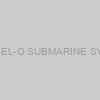 MINI GEL-O SUBMARINE SYSTEM |
|
JSB-30 |
IBI Scientific |
7.5CM X 10CM FORMAT |
EUR 549.58 |
 ULTRAWIDE MINI SUBMARINE |
|
JSB-96 |
IBI Scientific |
SYSTEM 23.5CM X 15CM FORMAT |
EUR 872.06 |
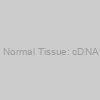 cDNA - Plant Normal Tissue: cDNA - Plant: Corn |
|
C1634330 |
Biochain |
40 reactions |
EUR 674 |
 cDNA - Plant Normal Tissue: cDNA - Plant: Rice |
|
C1634360 |
Biochain |
40 reactions |
EUR 674 |
 cDNA - Plant Normal Tissue: cDNA - Plant: Wheat |
|
C1634390 |
Biochain |
40 reactions |
EUR 674 |
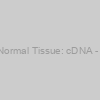 cDNA - Plant Normal Tissue: cDNA - Plant: Orange |
|
C1634340 |
Biochain |
40 reactions |
EUR 674 |
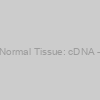 cDNA - Plant Normal Tissue: cDNA - Plant: Potato |
|
C1634350 |
Biochain |
40 reactions |
EUR 674 |
 Rabbit SUBMAXILLARY MATURE 50 EA |
|
41343-2 |
Pel-Freez |
50 EA |
EUR 382.07 |
 Oak cDNA |
|
PLD-1005 |
Zyagen |
30 reactions |
EUR 498 |
 Fig cDNA |
|
PLD-1042 |
Zyagen |
30 reactions |
EUR 498 |
 Oat cDNA |
|
PLD-1096 |
Zyagen |
30 reactions |
EUR 498 |
 Rye cDNA |
|
PLD-1097 |
Zyagen |
30 reactions |
EUR 498 |
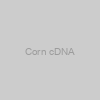 Corn cDNA |
|
PLD-1002 |
Zyagen |
30 reactions |
EUR 498 |
 Rice cDNA |
|
PLD-1004 |
Zyagen |
30 reactions |
EUR 498 |
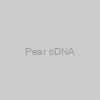 Pear cDNA |
|
PLD-1033 |
Zyagen |
30 reactions |
EUR 498 |
 Pine cDNA |
|
PLD-1063 |
Zyagen |
30 reactions |
EUR 498 |
 DOUBLEWIDE MINI GELO SUBMARINE |
|
JSB-302 |
IBI Scientific |
SYSTEM 15CM X 10CM FORMAT |
EUR 725.15 |
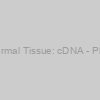 cDNA - Plant Normal Tissue: cDNA - Plant: Arabidopsis |
|
C1634310 |
Biochain |
40 reactions |
EUR 674 |
 Apple cDNA |
|
PLD-1001 |
Zyagen |
30 reactions |
EUR 498 |
 Beans cDNA |
|
PLD-1051 |
Zyagen |
30 reactions |
EUR 498 |
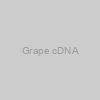 Grape cDNA |
|
PLD-1052 |
Zyagen |
30 reactions |
EUR 498 |
 Lemon cDNA |
|
PLD-1062 |
Zyagen |
30 reactions |
EUR 498 |
 Wheat cDNA |
|
PLD-1084 |
Zyagen |
30 reactions |
EUR 498 |
 Onion cDNA |
|
PLD-1092 |
Zyagen |
30 reactions |
EUR 498 |
 Maple cDNA |
|
PLD-1094 |
Zyagen |
30 reactions |
EUR 498 |
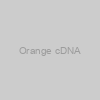 Orange cDNA |
|
PLD-1003 |
Zyagen |
30 reactions |
EUR 498 |
 Cotton cDNA |
|
PLD-1022 |
Zyagen |
30 reactions |
EUR 498 |
 Banana cDNA |
|
PLD-1031 |
Zyagen |
30 reactions |
EUR 498 |
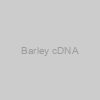 Barley cDNA |
|
PLD-1041 |
Zyagen |
30 reactions |
EUR 498 |
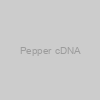 Pepper cDNA |
|
PLD-1043 |
Zyagen |
30 reactions |
EUR 498 |
 Potato cDNA |
|
PLD-1073 |
Zyagen |
30 reactions |
EUR 498 |
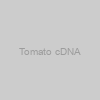 Tomato cDNA |
|
PLD-1074 |
Zyagen |
30 reactions |
EUR 498 |
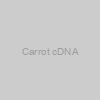 Carrot cDNA |
|
PLD-1081 |
Zyagen |
30 reactions |
EUR 498 |
 Radish cDNA |
|
PLD-1083 |
Zyagen |
30 reactions |
EUR 498 |
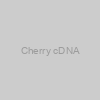 Cherry cDNA |
|
PLD-1091 |
Zyagen |
30 reactions |
EUR 498 |
 Squash cDNA |
|
PLD-1111 |
Zyagen |
30 reactions |
EUR 498 |
 Bovine SALIVARY SUBMAXILLARY 50 EA* |
|
57143-2 |
Pel-Freez |
50 EA |
EUR 555.64 |
 Apricot cDNA |
|
PLD-1011 |
Zyagen |
30 reactions |
EUR 498 |
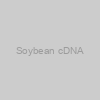 Soybean cDNA |
|
PLD-1044 |
Zyagen |
30 reactions |
EUR 498 |
 Spinach cDNA |
|
PLD-1054 |
Zyagen |
30 reactions |
EUR 498 |
 Cabbage cDNA |
|
PLD-1071 |
Zyagen |
30 reactions |
EUR 498 |
 Lettuce cDNA |
|
PLD-1072 |
Zyagen |
30 reactions |
EUR 498 |
 Tobacco cDNA |
|
PLD-1101 |
Zyagen |
30 reactions |
EUR 498 |
 cDNA - Plant Normal Tissue: cDNA - Plant: Soy bean |
|
C1634370 |
Biochain |
40 reactions |
EUR 674 |
 Cucumber cDNA |
|
PLD-1032 |
Zyagen |
30 reactions |
EUR 498 |
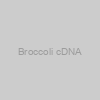 Broccoli cDNA |
|
PLD-1061 |
Zyagen |
30 reactions |
EUR 498 |
 Rapeseed cDNA |
|
PLD-1093 |
Zyagen |
30 reactions |
EUR 498 |
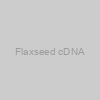 Flaxseed cDNA |
|
PLD-1095 |
Zyagen |
30 reactions |
EUR 498 |
 Pig Salivary, Submaxillary Total RNA |
|
PR-317 |
Zyagen |
0.1mg |
EUR 160 |
 Persimmon cDNA |
|
PLD-1053 |
Zyagen |
30 reactions |
EUR 498 |
 Sunflower cDNA |
|
PLD-1064 |
Zyagen |
30 reactions |
EUR 498 |
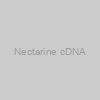 Nectarine cDNA |
|
PLD-1082 |
Zyagen |
30 reactions |
EUR 498 |
 Asparagus cDNA |
|
PLD-1131 |
Zyagen |
30 reactions |
EUR 498 |
 Arabidopsis cDNA |
|
PLD-1021 |
Zyagen |
30 reactions |
EUR 498 |
 Sheep Salivary, Submaxillary Total RNA |
|
SR-317 |
Zyagen |
0.1mg |
EUR 160 |
 Bovine Salivary, Submaxillary Total RNA |
|
BR-317 |
Zyagen |
0.1mg |
EUR 160 |
 Pig Salivary, Submaxillary Total Protein |
|
PT-317 |
Zyagen |
1mg |
EUR 153 |
 Rat Eye cDNA |
|
RD-106 |
Zyagen |
30 reactions |
EUR 243 |
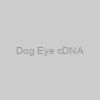 Dog Eye cDNA |
|
DD-106 |
Zyagen |
30 Reactions |
EUR 280 |
 Cat Eye cDNA |
|
FD-106 |
Zyagen |
30 Reactions |
EUR 280 |
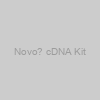 Novo? cDNA Kit |
|
M1165-100 |
Biovision |
each |
EUR 424.8 |
 Novo? cDNA Kit |
|
M1165-25 |
Biovision |
each |
EUR 320.4 |
 Pig Skin cDNA |
|
PD-101 |
Zyagen |
30 reactions |
EUR 243 |
 Pig Lung cDNA |
|
PD-601 |
Zyagen |
30 reactions |
EUR 243 |
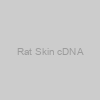 Rat Skin cDNA |
|
RD-101 |
Zyagen |
30 reactions |
EUR 243 |
 Rat Pons cDNA |
|
RD-207 |
Zyagen |
30 reactions |
EUR 243 |
 Rat Lung cDNA |
|
RD-601 |
Zyagen |
30 reactions |
EUR 243 |
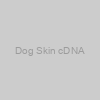 Dog Skin cDNA |
|
DD-101 |
Zyagen |
30 Reactions |
EUR 280 |
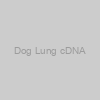 Dog Lung cDNA |
|
DD-601 |
Zyagen |
30 Reactions |
EUR 280 |
 Cat Lung cDNA |
|
FD-601 |
Zyagen |
30 Reactions |
EUR 280 |
 Pig Salivary, Submaxillary Frozen Sections |
|
PF-317 |
Zyagen |
10 slides |
EUR 261 |
Pancreatic ductal adenocarcinoma (PDAC) is an aggressive tumor and the fourth widespread trigger of most cancers loss of life within the Western world. The lack of efficient therapeutic methods is attributed to the late prognosis of this illness. Methylation markers may enhance early detection and assist in the surveillance of PDAC after remedy. Analysis of hypermethylation within the tumor tissue and tumor-derived exosomes may assist to determine new therapeutic methods and support within the understanding of the pathophysiological modifications occurring in pancreatic most cancers.


